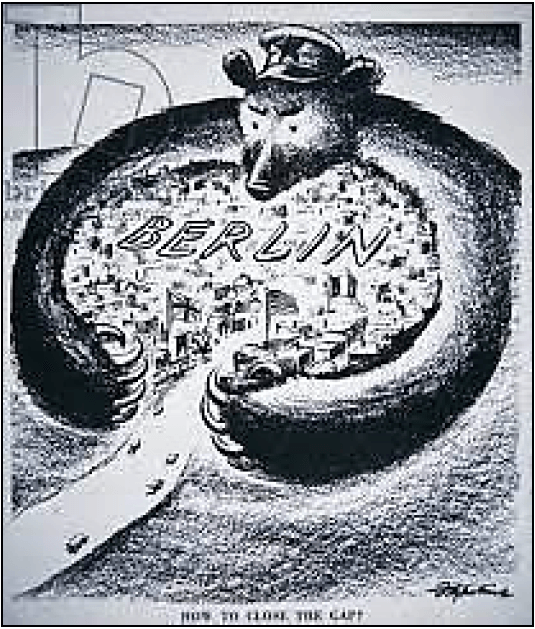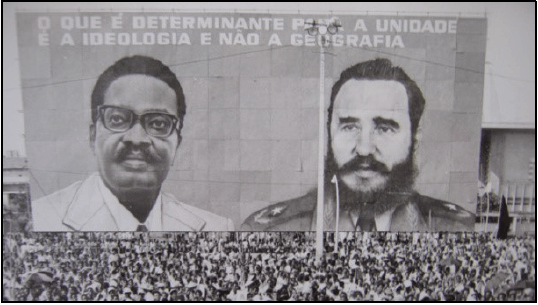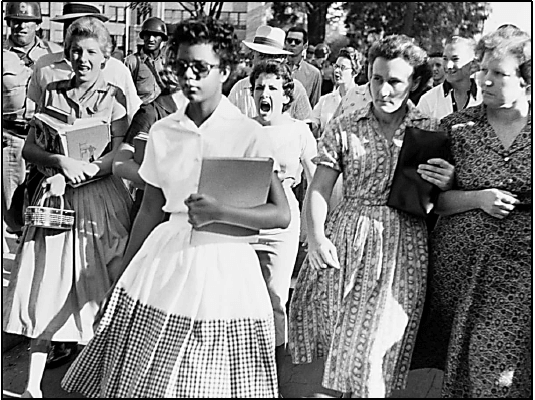History Paper 1 Addendum - Grade 12 June 2021 Exemplars
Share via Whatsapp Join our WhatsApp Group Join our Telegram GroupADDENDUM
QUESTION 1:
HOW AND WHY DID BERLIN BECOME A FOCAL POINT OF THE COLD WAR AFTER 1945?
SOURCE 1A
The following extract focuses on how the Cold War unfolded in Europe after 1945.
Without Germany’s defeat in 1945 and the subsequent power vacuum in central Europe, in which the former members of the Grand Coalition confronted each other eyeball to eyeball, the Cold War would not have occurred in the acute form that it did. At the Yalta Conference it had been agreed that Germany should be divided into four zones, each administered by one of the victorious powers. Sovereignty passed collectively to the Four Powers, who, it was envisaged, would govern Germany through the Control Commission based in Berlin, which was itself divided into four sectors. Disagreements intensified, however, and a united Germany became a prize, which neither the USSR nor the Western Allies could concede to the other. In any East-West conflict, Germany’s industrial and manpower resources would be decided. In the Ruhr, the Western Powers already possessed the industrial powerhouse of Europe and could therefore afford to risk the partition of Germany by pressing ahead in 1948 with the creation of a semi-independent Western Germany. Without war, the USSR could not stop this, but, with the Western military presence in Berlin, they did have a hostage. By bringing pressure to bear on this outpost they could, so they hoped, wring concessions from London, Washington and Paris. [From http//www.historytoday.com/david-williamson/berlin-flash-point-cold-war-1948-1989. Accessed on 27 May 2021.] |
SOURCE 1B
This article focuses on the imposition of the Berlin blockade by the Soviet Union.
The first heightening of Cold War tensions occurred in 1948 when the Soviets imposed a partial blockade of Berlin in April, and then a full blockade in June. Understanding the events that led to the imposition of the blockades is the key to understanding the later division of Berlin in 1961 by the Berlin Wall, and the division of the German state that had occurred earlier in 1949 when separate west German (federal Republic of Germany) and east German (German Democratic Republic) states were established. There are three key events that led to Soviet blockades of Berlin: the institution of the Marshal Plan for European recovery, the London Conference in the winter and spring of 1948 and the resultant London Program, which called for a separate West Germany and currency reform as a means to reach this end. But the Western powers would not give in. To demonstrate their resolve, the Americans orchestrated a monumental airlift, which flew necessities such as coal and food into the Western sectors of Berlin. This airlift lasted for 324 days, and approximately 13 000 tons of supplies a day were delivered. In the spring of 1949, it was increasingly clear that the objectives Stalin had in mind when ordering a blockade were not going to be met. The US was continuing its counter blockade measures, the separate western government in Germany was about to be established, and the North Atlantic Treaty was being signed in Washington. Stalin had the choice of either continuing with the disastrous blockade or admitting defeat and lifting the blockade. Stalin chose the latter, and in May 1949, at the final meeting of the Council of Foreign Ministers, the blockade was ended. [From http//www.coldwar.org/articles/40s/berlin-blockade.asp. Accessed on 28 May 2021.] |
SOURCE 1C
This extract focuses on the Berlin Airlift.
In time, the aircraft became ever more efficient and the number of aircrafts increased. At the height of the campaign, one plane landed every 45 seconds at Tempelhof Airport. By spring 1949, the Berlin Airlift proved successful. The Western Allies showed that they could sustain the operation indefinitely. At the same time, the allied counter-blockade on eastern Germany was causing severe shortages, which, Moscow feared, might lead to political upheaval. On May 11, 1949, Moscow lifted the blockade of West Berlin. The Berlin Crisis of 1948– 1949 solidified the division of Europe. Shortly before the end of the blockade, the Western Allies created the North Atlantic Treaty Organisation (NATO). Two weeks after the end of the blockade, the state of West Germany was established, soon followed by the creation of East Germany. The incident solidified the demarcation between East and West in Europe; it was one of the few places on earth where US and Soviet armed forces stood face-to-face. It also transformed Berlin, once equated with Prussian militarism and Nazism, into a symbol of democracy and freedom in the fight against Communism. [From: http://history.state.gov/milestones/1945-1952/brlin-airlift. Accessed on 25 May 2021.] |
SOURCE 1D
An American cartoon by D.R. Fitzpatrick, commenting on Soviet actions in Berlin.
[https://fineartamerica.com/featured/cold-war-berlin-d-r-fitzpatrick.html. Accessed on 25 May 2021.]
QUESTION 2: WHY DID FOREIGN POWERS BECOME INVOLVED IN THE ANGOLAN WAR OF INDEPENDENCE?
SOURCE 2A
This source explains the power struggles that erupted after Angola became independent in 1974.
Three main military movements had been fighting for Angolan independence since the 1960s. The Popular movement for the Liberation of Angola (MPLA) was a Marxist organisation centred in the capital, Luanda, and led by Agostinho Neto. The National Front for the Liberation of Angola (FNLA) led by Holden Roberto, was based in the north of the country and had strong ties to the US ally (friend), Mobutu Sese Seko, in neighbouring Zaire. The National Union for the Total Independence of Angola (UNITA), an offshoot of the FNLA, was led by Jonas Savimbi and supported by the country’s largest ethnic group, the Ovimbundu. [From https://history.state.gov/milestones/1969-1976/angola. Accessed on 26 May 2021.] |
SOURCE 2B
The source below outlines the reasons for South Africa’s involvement in Angola during the 1970s.
SA’s first intervention of Angola seems to have resulted from the need to secure and protect its own interests. The government was severely anti-communist at this time, as the notion of the ‘total national strategy’ against the ‘total onslaught’ of communism became the all-encompassing factor that determined foreign policy. SA’s détente politics toward Africa at this time was pursued rather successfully prior to the Angolan intervention in order to establish buffer zones, which would hopefully protect SA from the increasing communist threat. In addition, SA was becoming increasingly worried about this possible threat as the USSR and Cuba were enlarging their support to the MPLA after the coup in Portugal in 1974. The concentration of SWAPO insurgents on the southern Angola border furthermore endangered SA’s interests in SWA, as SWAPO was one of the MPLA’s biggest African allies. Both the MPLA and SWAPO were seen as Soviet proxies during the Cold War. In addition, SA was pressured by some in the international community to get involved in Angola for the first time. The USA, like SA, was also strongly anti-communist and supported SA’s initial involvement to some extent. France also had concerns. SA also saw its limited initial involvement as an opportunity to establish a less hostile government in Angola, than what was already established in Mozambique. The FNLA, UNITA and several African and international actors such as Zaire and even Zambia made similar requests. South Africa decided that it would be in its own as well as the region’s best interest to intervene in the Angolan conflict. [From South Africa’s Intervention in Angola: Before Cuito Cuanavale and Thereafter file:///E:/Angola%202/labuschagne_south_2009.pdf. Accessed on 26 May 2021.] |
SOURCE 2C
The extract below indicates how the United States of America supported UNITA during the Angolan Civil War.
The Central Intelligence Agency (CIA) made its first major weapons shipment to the FNLA in July 1975. Thus, like the Russians and Chinese, the United States was giving aid to one side of Angolan Civil War on a level far greater than it had ever provided during the struggle against Portuguese colonialism. The United States was directly involved in the civil war to a marked (noticeable) degree. In addition to training Angolan combat units, US personnel did considerable flying between Zaire and Congo carrying out reconnaissance (investigation) and supply missions, and the CIA spent over a million dollars on an ambitious mercenary (hired soldiers) programme. Several reports appeared in the US press stating that many American guerrillas were fighting in Angola against the MPLA from ‘scores’ to ‘300’ and that many others were recruited and trained in the United States to join them. But John Stockwell, the head of CIA’s Angola task force, puts the number of American mercenaries who actually made it to Angola at only 24. The CIA was also directly financing the arming of British mercenaries (fighting in Angola). Subsequently (later) the Secretary of the State, Henry Kissinger, informed the Senate that ‘the CIA is not involved’ in the recruitment of mercenaries for Angola. … Through recruited journalists representing major news service, the Agency (CIA) was able to generate international coverage of false reports for Soviet advisers in Angola. One CIA story, announced to the press by UNITA, was that 20 Russians and 35 Cubans had been captured. Another fabrication (lie) concerned alleged rapes committed by Cuban soldiers in Angola; this was elaborated to include their capture, trial and execution … From http://williamblum.org/chapters/killing-hope/angola. Accessed on 7 March 2020.] |
SOURCE 2D
This poster depicts President Agostinho Neto and Fidel Castro after Angolan independence celebrations.
[From https://mrdivis.wordpress.com/2016/12/02/remembering-fidel-castros-impact-in-southern-africa/. Accessed on 20 May 2021.]
QUESTION 3: HOW DID THE PROCESS OF SCHOOL INTEGRATION UNFOLD AT CENTRAL HIGH SCHOOL IN LITTLE ROCK, ARKANSAS?
SOURCE 3A
This extract focuses on Daisy Bates’ struggle to bring an end to school segregation in Little Rock.
Faubus’ alleged reason for calling out the troops was that he had received information that caravans of automobiles filled with white supremacists were heading toward Little Rock from all over the state. He therefore declared Central High School off limits to Negroes. He delivered the infamous words, ‘blood will run in the streets’ if Negro pupils should attempt to enter Central High School and with these words he made his contribution to the mass hysteria that was to grip the city of Little Rock for several months. The citizens of Little Rock gathered on 3 September to gaze upon the incredible spectacle of an empty school building surrounded by 250 armed National Guard troops. At about eight fifteen in the morning, Central High students started passing through the line of National Guardsmen – all but the nine Negro students. I had been in touch with their parents throughout the day. They were confused, and they were frightened. As the parents voiced their fears, they kept repeating Governor Faubus’ words that ‘blood would run in the streets of Little Rock’ should their teenage children try to attend Central – the school to which they had been assigned by the School Board. [From http://-spartacus-educational.com/USAlittlerock.htm?menu=USAevents3. Accessed on 31 May 2021.] |
SOURCE 3B
The following is an interview with Elizabeth Eckford, one of the nine African American students who was enrolled at Central High School in 1957.
The night before the Governor had gone on television and announced that he had called out the Arkansas National Guard, I thought he had done this to ensure the protection of all students. We did not have a telephone. So inevitably I was not contacted to let me know that Daisy Bates of the NAACP had arranged for some ministers to accompany the (nine black) students in a group. And so it was that I arrived alone … At the corner I tried to pass through the long line of guards around the school so as to enter the grounds behind them. One of the guards pointed across the street. So, I pointed in the same direction and asked whether he meant for me to cross the street and walk down. He nodded ‘yes’. So, I walked across the street, conscious of the crowd that stood there, but they moved away from me. For a moment all I could hear was the shuffling of the feet. Then someone shouted, ‘Here she comes, get ready!’ I moved away from the crowd on the sidewalk and into the street. If the mob came at me, I could then cross back over so the guards could protect me. The crowd moved in closer and then began to follow me, calling me names. I still wasn’t afraid, just a little bit nervous. All the time I kept thinking that the guards would protect me. When I got in front of the school, I went up to a guard again. But this time he just looked straight ahead and didn’t move to let me pass him. When I tried to squeeze past him, he raised his bayonet and then the guards moved in and they raised their bayonets. I turned around and the crowd came toward me. Somebody started yelling, ‘Lynch her! Lynch her!’ I tried to see a friendly face somewhere in the mob-scene who maybe would help. I looked into the face of an old woman and it seemed a kind face, but when I looked at her again, she spat on me. [From http://spartacus-educational.com/USAlittlerock.htm?menu=USAevents3. Accessed on 31 May 2021.] |
SOURCE 3C
This photograph shows a young white woman, Hazel Bryan, shouting at Elizabeth Eckford while attempting to enter the Central High School yard.
[From www.gettyimages.com/photos/elizabeth-eckford. Accessed on 3 June 2021.]
SOURCE 3D
The following extract focuses on the reaction of fellow students to school integration
Three young girls, barely into their teens, fell in directly behind Elizabeth. They were clearly together, and clearly students, two of them, like Elizabeth, carried books. They wanted to get close to Elizabeth, close enough to let her know that they didn’t want her in their school. It was easy, everyone, the television reporters, the grown-ups in the vacant lot across the street, the other kids were either egging (encouraging) them on, or, like the soldiers and policemen, paying them no mind. No one was telling them not to do anything. ‘Two, four, six, eight! We don’t want to integrate!’ they chanted. The girl to Elizabeth’s right, Hazel Bryan, looked livid (furious), her face poisoned with hate. As Benjamin Fine of the New York Times later described her, ‘she was screaming, just hysterical, just like one of these Elvis Presley hysterical deals, where these kids are fainting with hysteria’. Her eyes narrowed, her brow furrowed, her teeth clenched (tightened) as if about to bite. Hazel then shouted some more: ‘Go home, nigger! Go back to Africa!’ A photographer captured Hazel Bryan shouting these words at Elizabeth Eckford and published the photograph on the front page of a local publication called the Gazette. [From Elizabeth and Hazel – Two of Little Rock by D Margolick] |
ACKNOWLEDGEMENTS
Visual sources and other historical evidence were taken from the following:
- http://www.historytoday.com/david-williamson/berli-flash-point-cold-war-1948-1989
- http://www.coldwar.org/article/40s/berlin-blockade.asp
- http://history.state.gov/milestones/1945-1952/berlin.airlift
- https://fineartamerica.com/featured/cold-war-berlin-d-r-fitzpatrick.html
- http://spartacus-educational.com/USAlittlerock.htm?menu=USAevents3.
- Elizabeth and Hazel – Two Women of little Rock by D Margolick.
- www.gettyimages.com/photos/elizabeth-eckford
- Journal of Cold War Studies. Summer 2013, Vol. 15 Issue 3, p4–33. 30p
- Mazrui, A. 1993. General History of Africa, Vol. VIII: Africa Since 1935 (Heinemann, University of California)
- Waters, M.A. 2013. Cuba & Angola – Fighting for Africa's Freedom and Our Own (Pathfinder Press, Johannesburg)
- https://spartacus-educational.com/USAhamptonF.htm